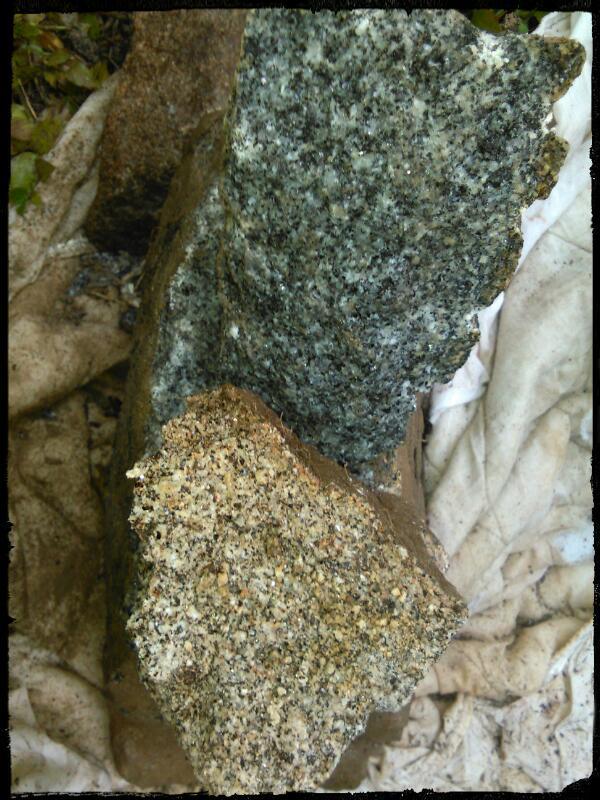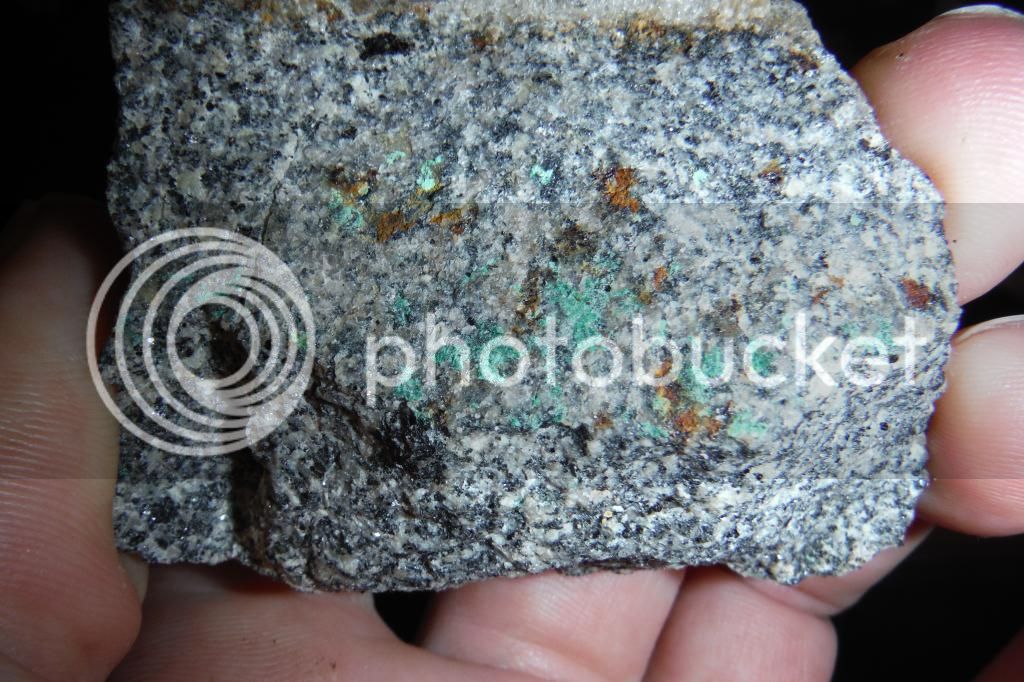I've stayed away from the granite in the past due to inexperience but am getting and interest and info in it.
I've started looking in the granites, and comparing to tell what each one is.
Can someone help as to how to analyze / describe a type of granite I find?
Its hard to identify feldspars, mica, hornblende, halite etc..how do I tell what the white grain in a granite is easier as there's soo many.
What exactly is porphyry granite as I've read about 3 different explanations.
It seems that dark pockets of rust or black are in the granite, should I be looking for vugh's or metamorphic intrusions..?
Here's two I brought home. On the top is fine granied and very solid / hard. A constant pattern of the same sized particles. On the bottom from the same area but this ones had acid wear and is breaking up to the touch.
Any interesting facts or pointers on granite(s) would be great!

I've started looking in the granites, and comparing to tell what each one is.
Can someone help as to how to analyze / describe a type of granite I find?
Its hard to identify feldspars, mica, hornblende, halite etc..how do I tell what the white grain in a granite is easier as there's soo many.
What exactly is porphyry granite as I've read about 3 different explanations.
It seems that dark pockets of rust or black are in the granite, should I be looking for vugh's or metamorphic intrusions..?
Here's two I brought home. On the top is fine granied and very solid / hard. A constant pattern of the same sized particles. On the bottom from the same area but this ones had acid wear and is breaking up to the touch.
Any interesting facts or pointers on granite(s) would be great!





